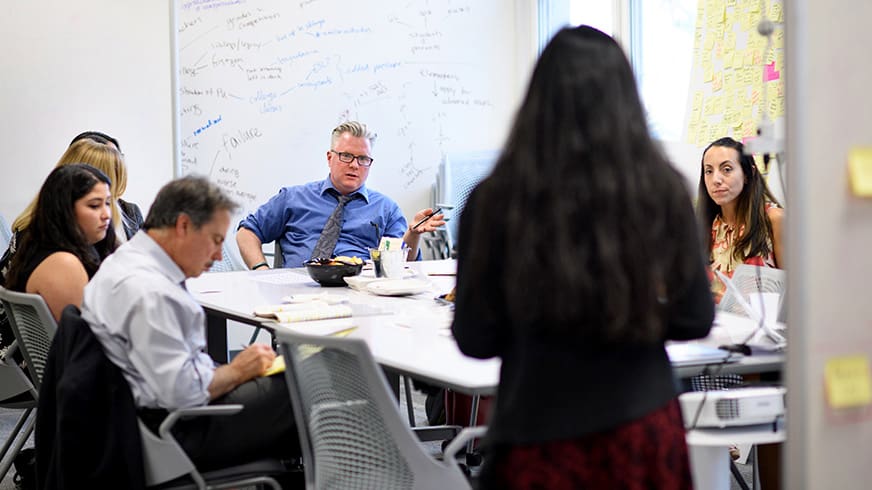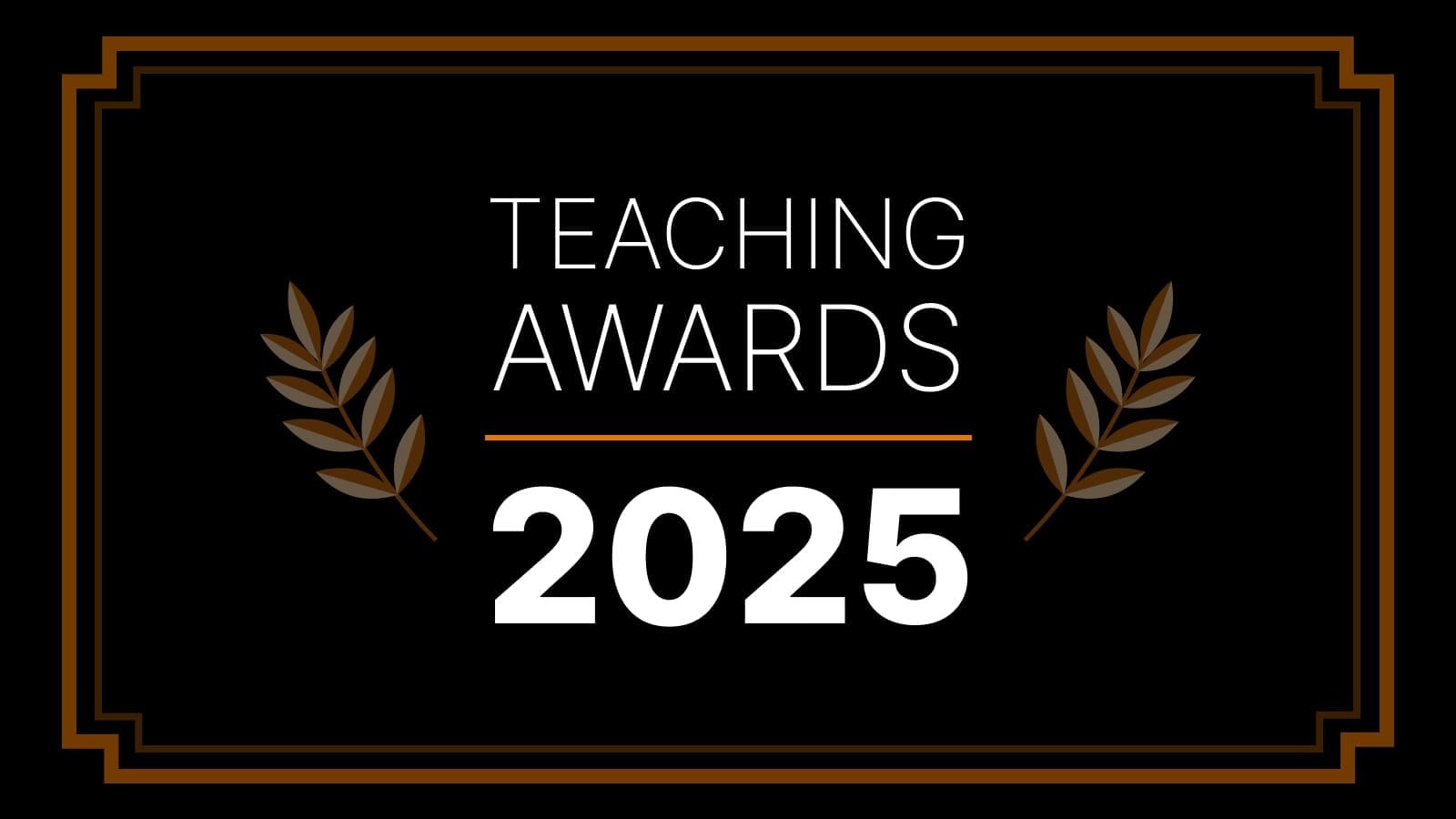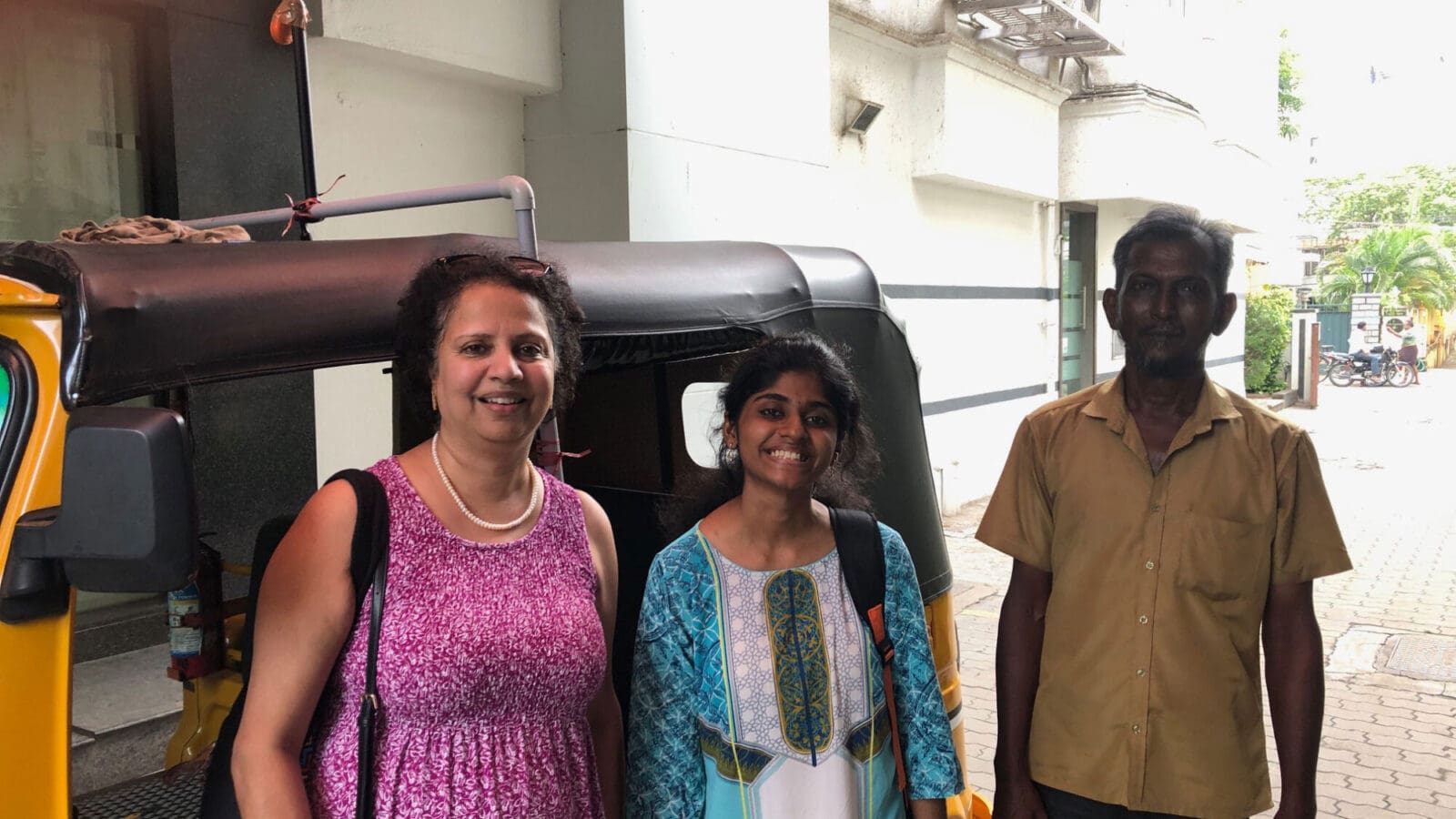
Student teams tackle teacher shortages and academic stress
By
on
As part of Tiger Challenge, a multi-year, multi-disciplinary program at Princeton, a team of undergraduates said additional on-campus resources could inspire more students to careers in teaching.
Tiger Challenge is a program organized by Princeton University’s Keller Center to help students tackle seemingly intractable problems through design thinking, a methodology that unlocks empathy, creativity, collaboration and open-mindedness. In small teams, students work with partner communities to develop lasting innovations to address societal issues, such as affordable housing and adolescent mental health.
In recent presentations at the Princeton Entrepreneurial Hub on Chambers Street, two teams addressing problems in New Jersey-New York-region schools described their most recent findings after months of research and outlined preliminary ideas for solving them. One team of four undergraduates, called TeachON, spent the last couple months exploring the reasons behind the scarcity and lack of teacher diversity among highly qualified teachers in the New Jersey public school system. Through research and conversations with educators, mentors and students, the team hopes to design ways to expand opportunities for students to become more involved with teaching.
To understand how people chose their careers, the team visited three high schools: Jersey City Public School 28, Morristown High School and Scarsdale High School. The research indicated that people were dissuaded from teaching for a variety of reasons, including economic expectations and social fulfillment.
Team member Michael Casto, a sophomore economics major, said the team observed a lack of opportunities for students to participate in the teaching profession and a lack of channels to process experiences with the teaching career, which sharply contrasts with other fields, such as technology, law and finance.
“My eyes have been opened to the fact that if we want to change education policy, we have to look at the people themselves and not base our assumptions on our own experiences as a student. I learned we have to look at issues as an outsider and get as many perspectives as possible,” said Casto.
The team is planning to start conversations with high school administrations, which they determined to be the most feasible and influential level to start creating more organizations to help students.
“Tiger Challenge as a whole helped me realize how important it is to talk to the people who are involved in the issue,” said team member Ruting Li, a sophomore in Princeton’s Woodrow Wilson School of Public and International Affairs. “That’s my favorite part of the process, hearing what students had to say and how much they wanted to share. Now I’m very invested in finding ways to inspire students to pursue teaching careers.”
The team also received guidance from various local stakeholders, including representatives from the Department of Education, New Jersey Education Association, Princeton University’s Teacher Prep Program, Teach for America, Princeton Public Schools and other individuals of special interest.
Mike Ritzius, associate director of professional development with the New Jersey Education Association, said it is essential for students to have real-world experiences.
“We can describe how the education system works but nothing beats experiencing the nitty gritty details themselves and pulling it apart, trying to problem solve and think critically,” he said. “It’s important to have these opportunities for students. To turn something theoretical into reality.”
To see Princeton students invested in helping future educators was inspiring for Elizabeth Fernandez-Vina, an education program development specialist with the Department of Education.
“It was clear they put a lot of time and effort into learning and synthesizing their findings about how and why one chooses to become a teacher,” Fernandez-Vina said. “With each meeting, we left invigorated with the feeling of knowing that our youth values and is taking initiative to learn about how to encourage more students to become educators.”
Tackling issues along a similar thread, a second group, the StressLess Team, focused on academic stress and its potential impact on mental health for students from kindergarten to high school. They also found a need to provide more student, teacher and parent support to help cope with stress.
Team member Jack Burdick, a sophomore geosciences major, said there were three main issues associated with academic mental health that they discovered through interviewing over 70 local students, teachers, parents, administrators and guidance counselors.
The first is that stress comes from many places and cannot be separated, he said. Second, students do not have the tools to cope with their stress. Third, there is a saturation of policies that students find ineffective or inauthentic.
“There’s no ‘one size fits all’ solution,” said Burdick. “It’s been very interesting because when we conduct interviews and ask questions, we found that we get more questions back. This gives us really unique perspectives and insights that we never would have thought of.”
Téa Wimer, a sophomore majoring in religion, was surprised at the disconnection between students, parents and educators. There is a lot of student-to-student counseling on campus, but the communications gap between students and adults is still too wide, she said.
“I realized the importance of meaningful conversations to get to the root of issues,” said Wimer, emphasizing the need to bridge the distance between the different groups of people and organizations. And just as better communication could help address the nationwide problem of student stress levels, better listening and empathy has been one of the take-away themes for the Tiger Challenge teams.
“I learned that it helps just to listen and this experience has changed the way I talk to people,” Wimer said.
Wimer and her teammates said their research and interviews have helped them become more curious, to think differently and enhance their own personal skills.
“I’ve learned to listen better and started to make a more active effort in helping friends,” said team member Olivia Johnston, a freshman computer science major. “I’ve gotten better at understanding my own wellbeing, which allows me to be more emphatic towards other people’s situations. That’s an important skill to have.”
After taking the summer off, the two teams will return in next school year to develop concepts and help the school district implement an innovative design to combat stress and improve mental health.
The teams will be encouraged to keep their work going beyond May 2018 and to consider how future students can build on their initial impact, said Rafe Steinhauer, entrepreneurial program manager at the Keller Center, who oversees Tiger Challenge.
Students apply to participate in Tiger Challenge and then are matched with challenges identified by community partners; currently 72 students make up 14 teams, working on topics ranging from civic engagement and holistic intellectual well-being, to climate planning and refugee career opportunities.
Tiger Challenge leads students through the design thinking process in several phases: Scoping (crafting research plans); Inspiration (researching the topic with a heavy emphasis on interviews with the people most directly affected); Synthesis (making sense of all the information); Ideation (brainstorming and concept developing); Prototyping (quickly testing and iterating initial concepts); Piloting (testing a design over time); and Implementation.
Along the way, the teams collaborate with local stakeholders and mentors for guidance and advice.
Since starting Tiger Challenge in 2016, Steinhauer said, a key to its success has been close collaboration between Princeton staff and students.
“I think developing the program together makes Tiger Challenge unique,” said Steinhauer, a member of the Class of 2007. “Since it’s so new, we are still testing and iterating the program, itself. But it’s been a great year, and it’s wonderful to see that the program is received well and that students and local organizations want to be involved.”





